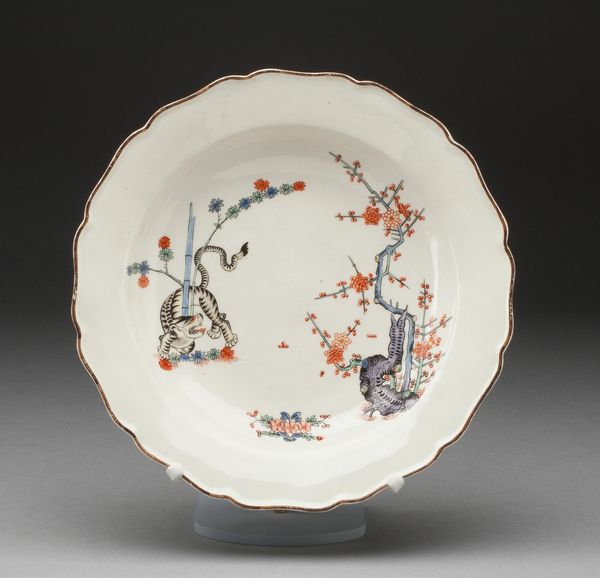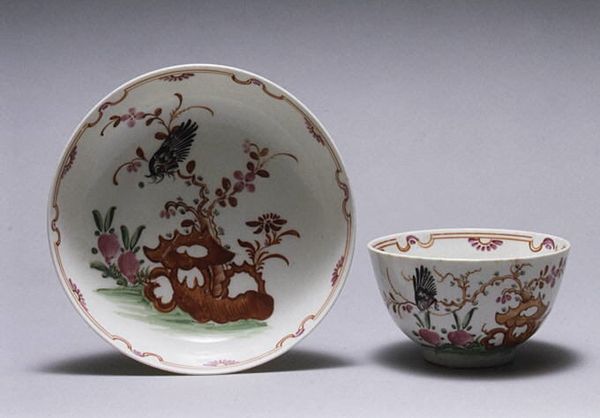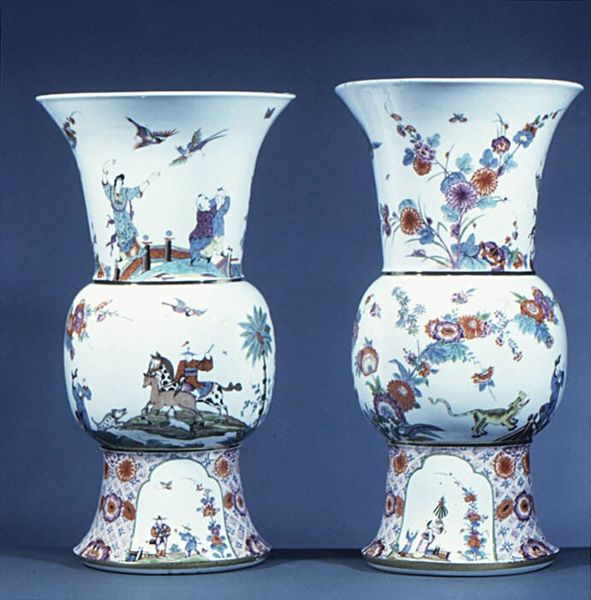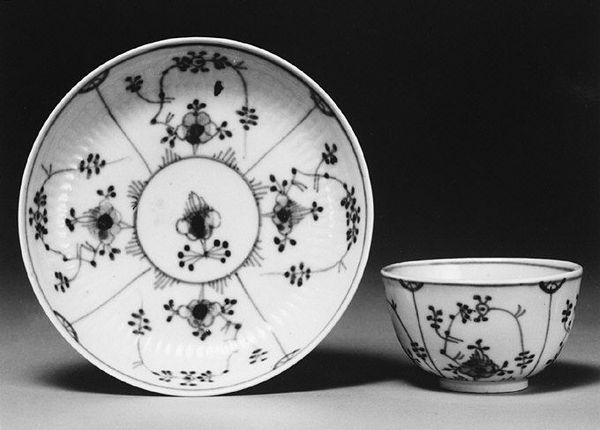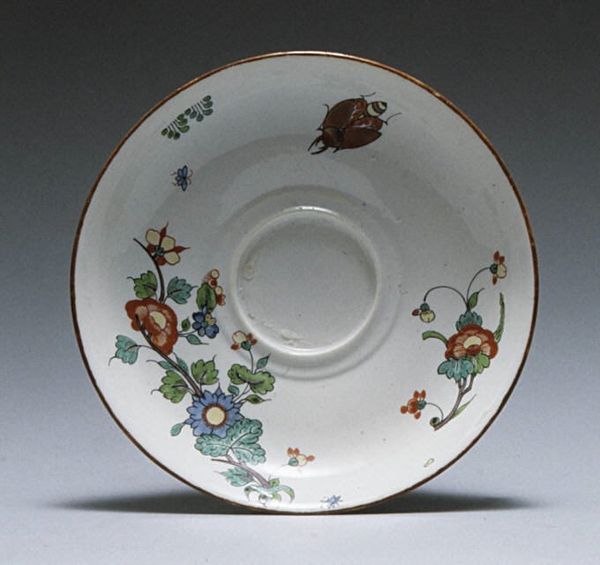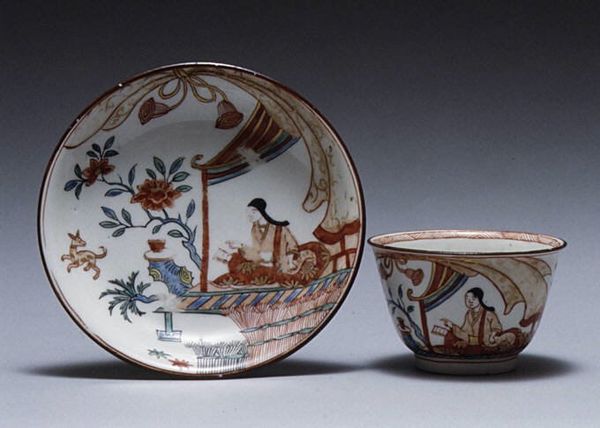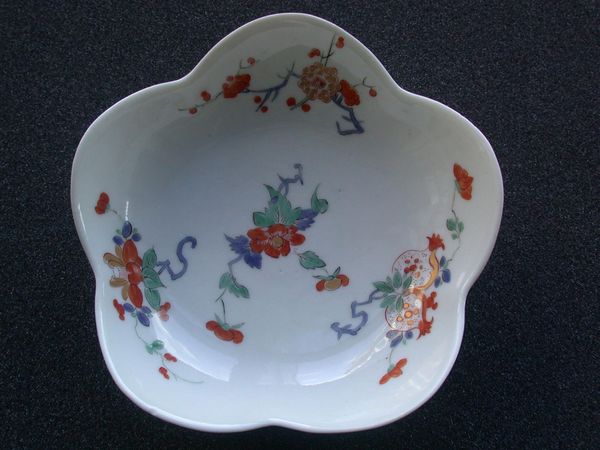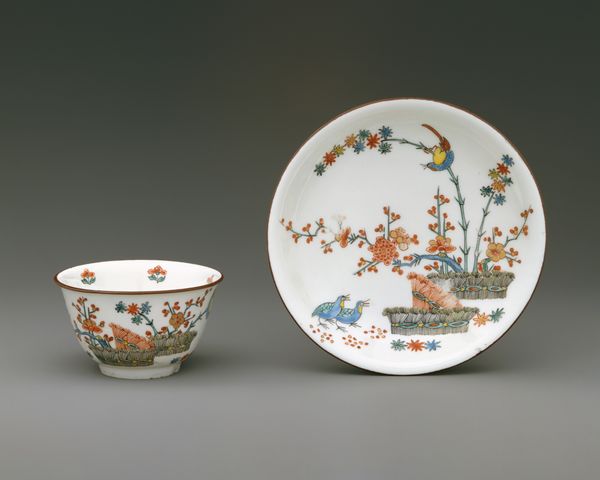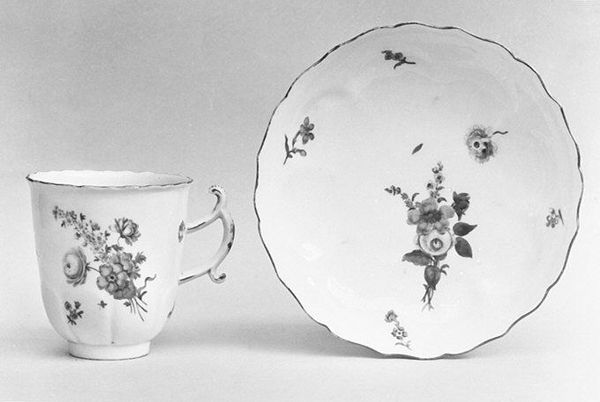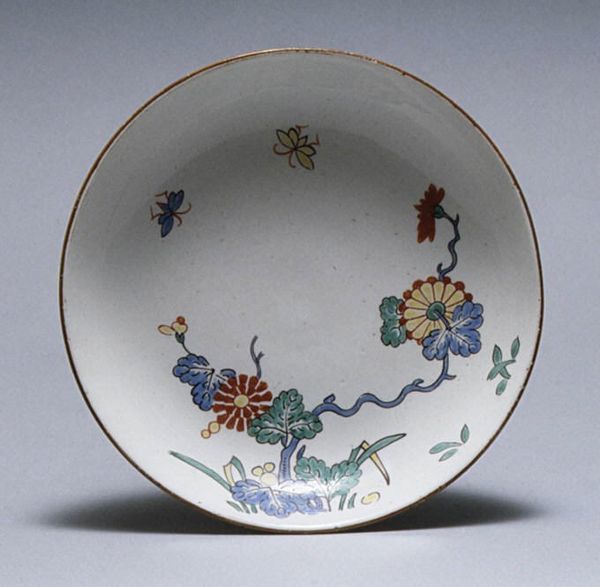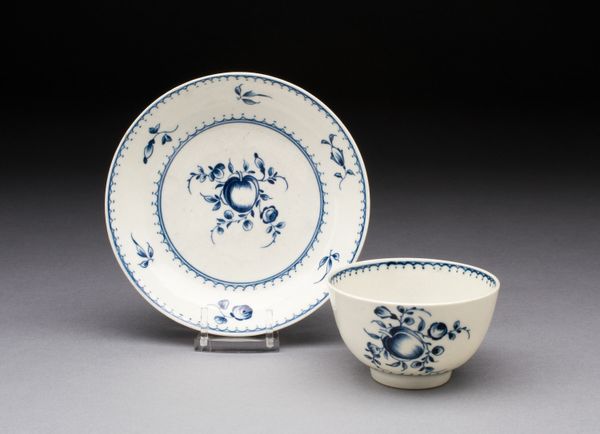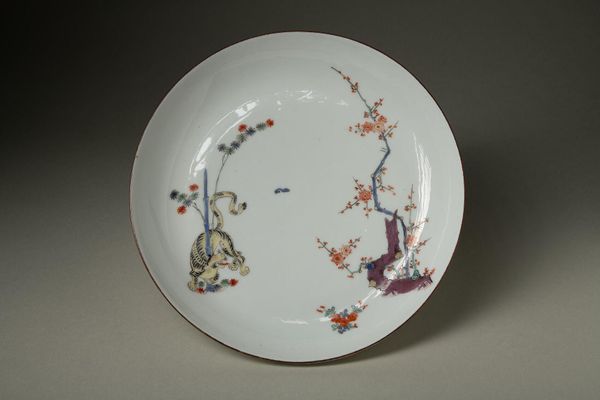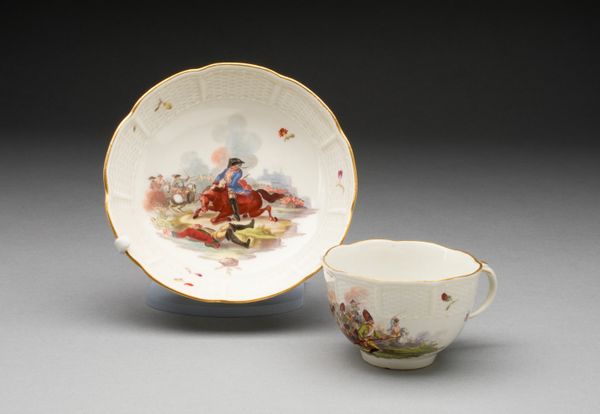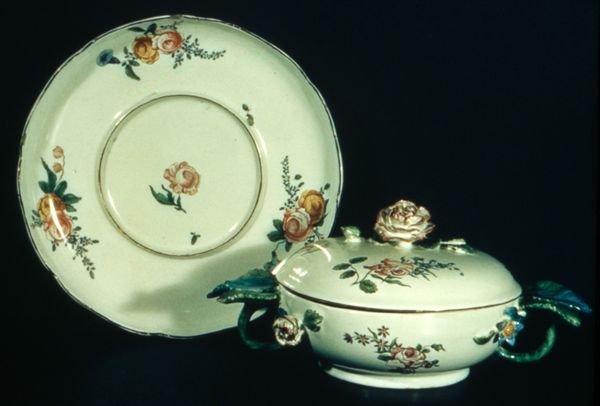
ceramic, porcelain
#
pottery
#
ceramic
#
porcelain
#
ceramic
#
earthenware
#
rococo
Dimensions: 2 1/2 x 2 5/8 x 2 5/8 in. (6.35 x 6.67 x 6.67 cm)
Copyright: Public Domain
Curator: Here we have a "Cup and saucer" made around 1750 at the Meissen Porcelain Factory. The use of porcelain and the Rococo style places it firmly in the height of European aristocratic taste. What is your first impression? Editor: Delicate and utterly impractical! It’s a beautiful set, but I can already imagine the fraught dynamics of who would be considered worthy enough to use it and who would be washing it. Curator: Precisely! Meissen porcelain was among the first to be produced in Europe, quickly becoming a status symbol. The value of objects like this goes far beyond their practical function; they embody social standing, access to trade routes, and mastery of craft. Editor: Looking closer, the painted decoration of birds and flowers adds a layer of Orientalism, doesn't it? These designs are inspired by East Asian porcelain which was so highly coveted at the time. There’s a whole history of colonial desire baked into this delicate surface. Curator: Exactly. It's an imitation, or perhaps, a European interpretation, revealing much about the politics of trade and cultural appropriation during the period. What does the image of the birds and flowers communicate in this context? Editor: They speak to the aristocratic fantasy of the pastoral, but one meticulously curated. Even the leisure is manufactured; there’s something sterile about its beauty, a far cry from the realities of the lives of the vast majority who had no access to such luxuries. Curator: A good point. It underscores how these objects acted as propaganda for the elites, communicating messages of wealth and effortless elegance at a time of growing social disparity. The patronage of such luxurious craft production by royalty definitely impacted the political landscape of the time. Editor: We need to consider its current location as well, at the Minneapolis Institute of Art, now viewed and valued very differently. Once it would be handled daily but today this ceramic artwork is behind glass, becoming a reflection of societal hierarchies that persists into today. Curator: Yes, it encourages viewers to question their relationship with museums, how they display objects, and what narratives are amplified, and by whom. It really asks what values museums wish to continue enshrining and which ones we aim to actively dismantle. Editor: Absolutely, and it demonstrates how objects like this continue to stir important discussion, even centuries later. Curator: Indeed, prompting critical evaluation about art's role in society, both historically and in our present day.
Comments
No comments
Be the first to comment and join the conversation on the ultimate creative platform.
